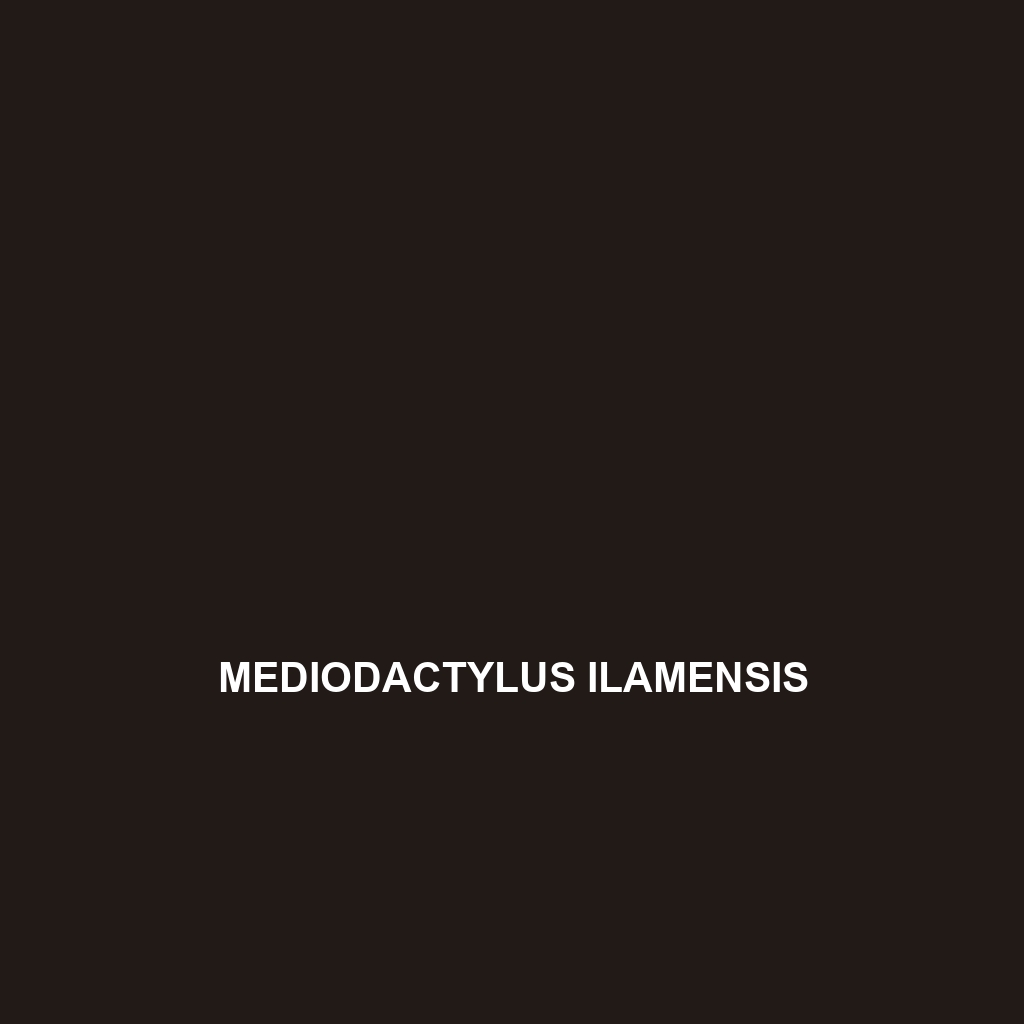Common Name
Mediodactylus ilamensis
Scientific Name
Mediodactylus ilamensis
Habitat
Mediodactylus ilamensis, commonly known as the Ilam gecko, is primarily found in the mountainous regions of western Iran, particularly in the Ilam Province. This species thrives in a diverse range of habitats, including temperate forests, rocky outcrops, and grasslands. The climate in this area is characterized by cold winters and hot, dry summers, allowing the species to adapt well to its environment. These geckos are often located in areas with ample cover such as vegetation and crevices that provide shelter from predators. The presence of humidity in the early mornings and after rainfall is essentially vital for their survival, making their habitat one of the most ecologically rich and dynamic.
Physical Characteristics
Mediodactylus ilamensis exhibits several distinctive physical traits that differentiate it from other gecko species. Adult individuals typically reach a length of approximately 10 to 15 centimeters. They possess a slender body covered with granular scales that vary in coloration from light beige to dark brown, providing effective camouflage against their natural surroundings. One of the unique features of this gecko is its prehensile tail, which is not only an essential adaptation for climbing but also serves as a fat storage organ. The limbs are agile and well-developed, allowing for impressive climbing abilities and swift movement across rocky terrains.
Behavior
The behavior of Mediodactylus ilamensis is quite fascinating, as these geckos are primarily nocturnal. In the evenings, they become active hunters, foraging for food and engaging in social interactions. Mating rituals can often be observed during the warm summer months, where males exhibit territorial displays through vocalizations and elaborate body postures. During the day, these geckos tend to bask in shaded areas, leveraging their body temperature regulation to prepare for the cooler nights. The ability to blend into their environment aids in avoiding predators, further enhancing their survival rates.
Diet
Mediodactylus ilamensis is primarily insectivorous, feeding on various small invertebrates such as crickets, moths, and beetles. Their hunting strategy involves ambushing their prey with remarkable speed and precision. While the diet is predominantly comprised of insects, these geckos occasionally consume fruit and vegetation, indicating an omnivorous aspect to their feeding habits. The consumption of diverse food sources is crucial for obtaining essential nutrients for growth and reproduction.
Reproduction
The reproductive cycle of Mediodactylus ilamensis is intriguing. Mating season typically occurs during the warmer months, primarily in late spring to early summer. Females lay clutches of two eggs, which are deposited in secure locations such as under rocks or inside tree hollows. The gestation period lasts approximately 60 to 90 days before the eggs hatch, producing small, fully formed hatchlings that are capable of independent survival. Parental care is limited, but the initial hiding and camouflage of the hatchlings are critical to avoid predation.
Conservation Status
According to the International Union for Conservation of Nature (IUCN), Mediodactylus ilamensis is currently classified as “Least Concern,” yet it faces potential threats due to habitat destruction and climate change. Ongoing deforestation and land conversion for agricultural practices may impact its population. Conservation efforts aimed at protecting natural habitats and promoting sustainable land management practices are essential for ensuring the future survival of this species.
Interesting Facts
One interesting fact about Mediodactylus ilamensis is its ability to regenerate its tail after losing it to predators or during defensive bouts. This remarkable adaptation not only aids in survival but also plays a role in evading capture. Another striking feature is its vocal communication; these geckos are known to produce a series of clicks and chirps during mating, which may serve as both a mating call and a defense warning to deter potential threats.
Role in Ecosystem
Mediodactylus ilamensis plays a crucial role in its ecosystem as both predator and prey. By controlling the insect population, this gecko helps maintain ecological balance within its habitat. Additionally, it serves as a food source for larger predators, such as birds and snakes. The interactions of Mediodactylus ilamensis with other species contribute significantly to the health and sustainability of its environment, establishing it as an important component of local biodiversity.
